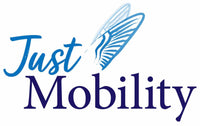Using your Mobility Scooter on Public Transport
Many people who use mobility aids choose to use their own cars to get out and about, but sometimes, using public transport is unavoidable. Anyone who has used a mobility scooter or wheelchair on public transport before knows only too well that this can be a stressful and difficult experience, so we’ve covered a few best practices to reduce that hassle when you next go out.
First, before you leave the house make sure you do all the usual checks on your mobility scooter aid:
- Batteries fully charged
- Tyres pumped up
- Planned your journey
- Packed a bag with any accessories (rain cover for bad weather, for example), essentials, and medication
Using your Mobility Scooter/Mobility Aid on a Bus
The Equality Act requires all buses to have space for at least one wheelchair or scooter towards the front of the vehicle, as well as low floors or those that sink to make getting on and off more accessible.
It’s important to note that most class 3 mobility scooters are not suitable for use on buses (and trains), as they are too large. Typically, scooters need to be class 2, and no wider than 60cm or longer than 120cm. When travelling, your scooter should be switched off and the brake applied at all times to keep you and others travelling with you safe.
A common problem mobility aid users will encounter when using public transport is that the space for scooters or wheelchairs on buses is often taken by pushchairs. Transport for London (TfL) have official guidelines which state:
“Wheelchair users are to be given access to the wheelchair space even if it is occupied by other passengers or buggies. Use the iBus automated announcement to make it clear that the wheelchair space is needed. If necessary, politely but firmly ask the buggy owners to move or fold their buggies to let the wheelchair user into the area as this is the only safe place for them to travel. Explain you will give them the time they need to do this and be patient and polite. Do not move off until they are re-positioned.”
Mobility Aids on Trains
Most trains in the UK are designed to accommodate wheelchairs with the same dimensions as buses (as prescribed by government regulations), i.e. 70cm wide by 120cm long.
National Rail advise you to contact your specific train company before cooking tickets to check they can safely accommodate your scooter. This is because some mobility scooters, depending on the shape and size, can be heavier than the ramp’s working load or unable to manoeuvre safely to board the carriage.
Some train operators will only carry your scooter if it can be folded and placed on a storage rack, while others require a permit. The differences in regulations mean it’s always a good idea to call ahead and make sure you won’t encounter any problems or delays in your journey on the day of travel.
Trains in the UK have designated spaces and priority seats for disabled people to make your journey more convenient. You should also consider applying for a disabled persons’ railcard which entitles you to one-third off rail fares for you and the person you are travelling with.
Travelling on the Underground with a wheelchair or scooter
While accessibility on the London Underground is improving, there are still many stations that have no wheelchair access. We would recommend using the TfL website to plan your journey and check that the stations you are planning on using have wheelchair access and lifts.
It is also a good idea to research the quieter times for the stations you are planning on travelling to, as rush hour can make it very difficult to manoeuvre through a busy station and have plenty of time to get on and off the trains.
Fully accessible public transport is still an ongoing issue in the UK, with many disabled people struggling to have their needs fully accommodated for on journeys.
Above all, planning your journey is going to serve you best when it comes to travelling on public transport with a mobility aid. Contact the operators for the form of public transport you will be using to request more information, don’t be afraid to request assistance and help where needed, and make sure the route you are using works for your needs.
